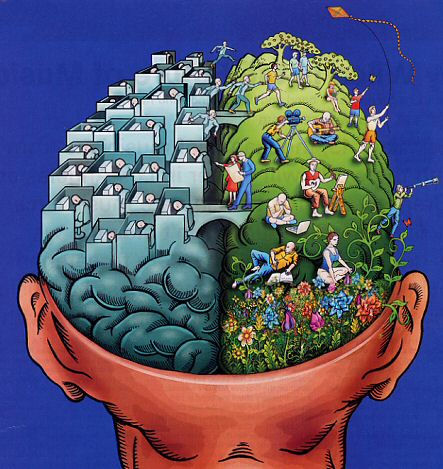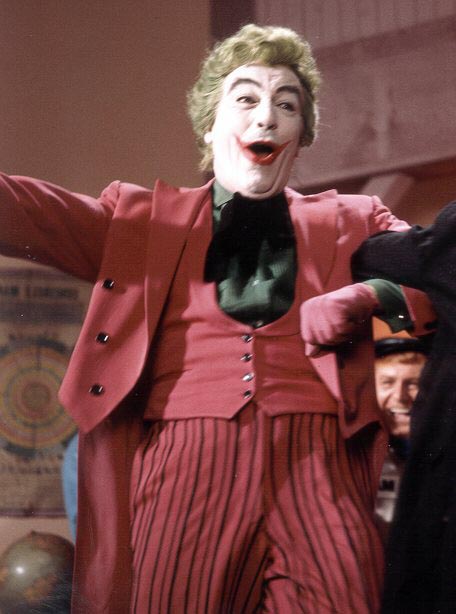Stumbling over old advice yet again, I've decided to share another little pearl here.
We've all had these moments. We're just getting the momentum rolling in our next, great saga. Our hero pushes open the door to meet... that guy... with the face... and the hair... and we have no idea what his name is.
Now, obviously, this can all be avoided by making yourself one of those handy bibles I've been hearing so much about. Basically dreaming up every detail of your world and writing it all in one place before putting a single syllable of your book to paper.
Look at you, with all your planning and preparation... Whatever. That's all fine and dandy, but let's face it, stories evolve. No one is capable of knowing every little detail that's going to spring up. The best laid plans of mice and men, and all that.
Recently, I had the problem of coming up with a name for a restaurant in my book. It needed to sound like a fancy place just by its name. Oh, and one little caveat, there are no foreign languages in my world. So De La Fantaisie is out.
I tripped over this moment and lost traction in my story. Why does this happen? Because writing is a creative process. You're dreaming up this world with the right side of your brain. Names and labels, on the other hand; you guessed it! Left side!
Now it may be a safe bet to say that the best writers have a pretty even balance across their brain. However, no matter who you are, if one side is on a roll, you don't want to fumble things up by getting in its way. If you run into this problem, and you stop to try and dream up a name, you'll be knocking all of the wind out of your sails. Assuming you do come up with a clever name, you'll find it so much harder to get back into your writing zone.
So what's the solution? Find & Replace! Just put something down. It will be stupid. It will be inappropriate. Who cares! Once you're done writing for the day, you can sift through your grey matter for a better name then just use the handy "find and replace" feature of any word processor and swap it out. The key is, don't stop writing!
My restaurant, by the way, was called Fancy Pants Restaurant for a week before I came up with something better. I also have a character in my book who has been named after one of the Thundercats since I dreamed him up... he may actually keep that name. There's my easter egg to you, once my book is published.
Saturday, July 6, 2013
Tuesday, July 2, 2013
Creating Characters that Create Stories
I've watched a lot of videos and read a lot of articles regarding character development, story outlining and brainstorming. While each have contained priceless tips and insight, they've also covered vastly different subjects and have contained varying viewpoints.
I took all these nuggets of knowledge and dropped them into the blender of my brain and, I think, come up with a few helpful (albeit, not entirely original) tips myself. For those interested in the raw ingredients, look up pretty much anything from Pixar. They have some incredible videos and articles on creating stories.
One tip I received a long time ago was to begin my story concept with the villain. So many people focus on their main character/hero, that their antagonist often falls flat. Even in the original draft of my current WIP, my heroes were fascinating characters with hopes, desires and goals. My villain, on the other hand, just went about doing villainous things for the sole purpose of putting obstacles in the way of the main character and his friends.
"I'm going to detonate this bomb!"
"Why?"
"...cuz I'm the bad guy... it's kinda my thing."
That may have worked for old school television episodes of Batman, but people tend to have higher expectations these days.
Now, of course, you can still create a believable antagonist as a secondary thought, but I've found that the easiest way to do this is to start with them. Dream up your bad-guy. Who is he? What does he want? What moral shortcomings does he have that will make him the villain on his way to achieving these goals? Grab one of the seven deadly sins and just run with it.
The result of this, is that your main character will suddenly become much more easy to develop. All they have to do is have a slightly more stable moral compass and be in the wrong place at the wrong time (or however you want to get them involved). Your main character will then automatically act heroically in response to your antagonist. Look at that! You've got a story well under way.
Now, I recently watched a video of a Pixar seminar on brainstorming. Their basic structure for creating any story is something like this:
So! Bippity boppity, timey wimey!
Use this structure but STILL start with the villain! Then, run through the structure again, this time with your hero. Then again with one of your supporting characters (everyone should have goals). And again, and again, until all of your characters have believable stories of their own, that everyone can relate to.
For example:
See how that works? We suddenly have a character that we can understand. He has depth, and we can relate to his actions (even if they were manipulated and a bit misguided).
Now run through the same process with the heroes, and just watch how their tales intertwine. I think you'll be impressed at how rich and believable your new concept becomes.
I took all these nuggets of knowledge and dropped them into the blender of my brain and, I think, come up with a few helpful (albeit, not entirely original) tips myself. For those interested in the raw ingredients, look up pretty much anything from Pixar. They have some incredible videos and articles on creating stories.
One tip I received a long time ago was to begin my story concept with the villain. So many people focus on their main character/hero, that their antagonist often falls flat. Even in the original draft of my current WIP, my heroes were fascinating characters with hopes, desires and goals. My villain, on the other hand, just went about doing villainous things for the sole purpose of putting obstacles in the way of the main character and his friends.
"I'm going to detonate this bomb!"
"Why?"
"...cuz I'm the bad guy... it's kinda my thing."
That may have worked for old school television episodes of Batman, but people tend to have higher expectations these days.
Now, of course, you can still create a believable antagonist as a secondary thought, but I've found that the easiest way to do this is to start with them. Dream up your bad-guy. Who is he? What does he want? What moral shortcomings does he have that will make him the villain on his way to achieving these goals? Grab one of the seven deadly sins and just run with it.
The result of this, is that your main character will suddenly become much more easy to develop. All they have to do is have a slightly more stable moral compass and be in the wrong place at the wrong time (or however you want to get them involved). Your main character will then automatically act heroically in response to your antagonist. Look at that! You've got a story well under way.
Now, I recently watched a video of a Pixar seminar on brainstorming. Their basic structure for creating any story is something like this:
- "Once there was a __________ who wanted to ___________"
- "Every day he/she would ___________"
- "Until one day __________"
- "Because of that __________"
- "Because of that __________"
- "Because of that __________"
- etc, etc, etc, story
- "Until finally _________"
- "And ever since then __________"
So! Bippity boppity, timey wimey!
Use this structure but STILL start with the villain! Then, run through the structure again, this time with your hero. Then again with one of your supporting characters (everyone should have goals). And again, and again, until all of your characters have believable stories of their own, that everyone can relate to.
For example:
- Once there was a young jedi, who wanted peace in the galaxy.
- Every day, he would train with his jedi master.
- Until one day, he was asked to spy on the chancellor.
- Because of that, he began doubting the intentions of the jedi.
- Because of that, the chancellor was able to convince him that the jedi were evil.
- Because of that, he joined the sith.
- Until finally, he helped the chancellor overthrow the corrupt government and defeat the jedi.
- Ever since then, he has ruled at the chancellor's side to maintain galactic peace.
See how that works? We suddenly have a character that we can understand. He has depth, and we can relate to his actions (even if they were manipulated and a bit misguided).
Now run through the same process with the heroes, and just watch how their tales intertwine. I think you'll be impressed at how rich and believable your new concept becomes.
Subscribe to:
Posts (Atom)

